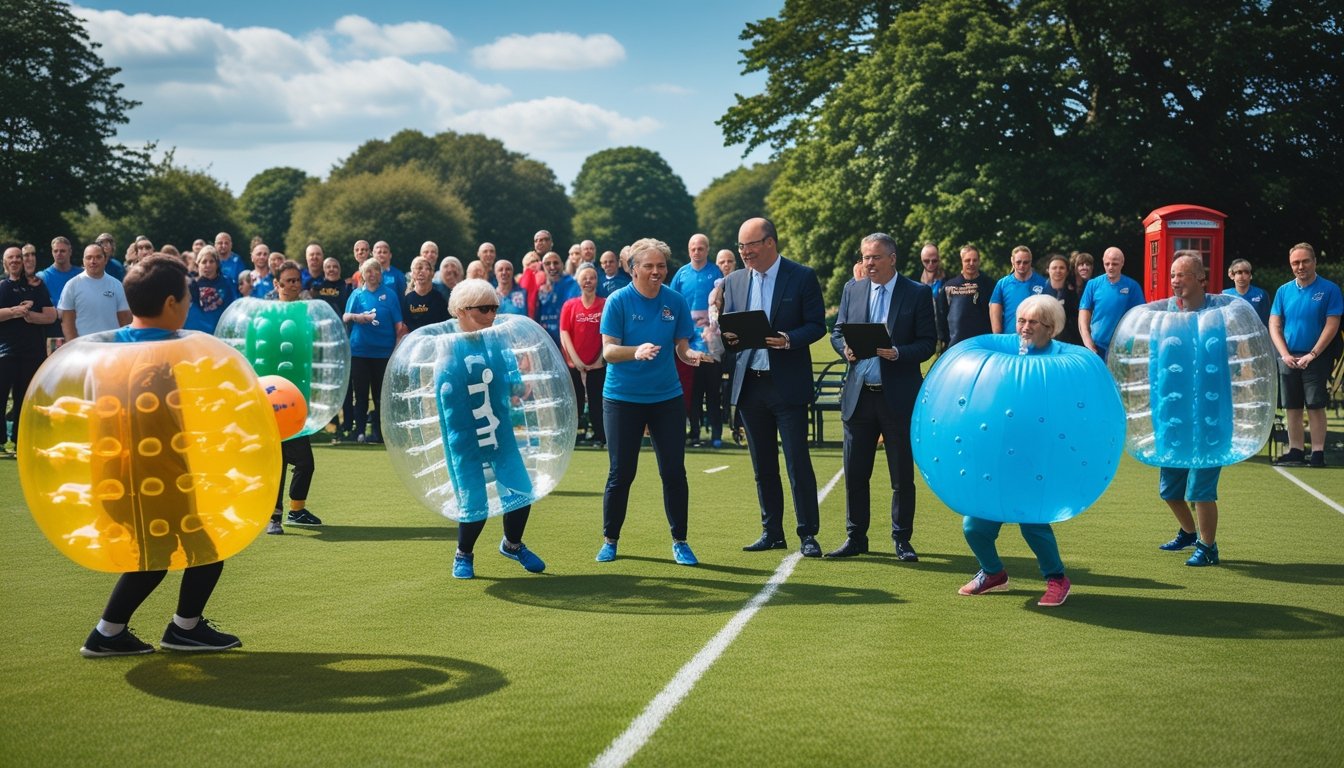Late updated: 08 Aug 2025 13:08
Written by: Emma Saunders
The Future Of Bubble Sports In The UK: Emerging Trends And Prospects
Bubble sports are reshaping the landscape of recreational activities in the UK, where tradition meets innovation in an explosive mix of fun and fitness. The rapid advancement of technology is transforming how these sports are played and experienced, integrating elements like augmented reality to keep players immersed and spectators engaged. The increase in interest among a wider demographic is evident, as more people are drawn to the novelty and excitement bubble sports offer, marking a significant cultural shift towards diverse and inclusive physical activities.

Governing bodies are now focusing on making bubble sports more accessible while maintaining safety standards and inclusivity. Integrating data-driven insights helps optimise gameplay and minimise injury risks, drawing enthusiasts from all age groups and skill levels. These developments are part of a larger trend to democratise sport, bridging gaps related to age, gender and ability.
As we continue to explore this growing phenomenon, we uncover the reasons that bubble sports are gaining popularity. Fewer barriers to entry enable more of us to participate in these sports, aligning with a broader movement towards active living and leisure. This promising future is inviting us all to don our bubble suits and bounce into the thrilling world of bubble sports in the UK.
Key Takeaways
- Technology is enhancing bubble sports experiences.
- Increasing accessibility and safety are priorities.
- More people are being drawn to diverse and inclusive bubble sports.
Key Trends Shaping The Future Of Bubble Sports In The UK
The bubble sports landscape in the UK is experiencing significant shifts, driven by rising popularity, fan engagement innovations, and advancements in technology. Each factor plays a crucial role in transforming how these sports are perceived and experienced by both players and enthusiasts.
Growth Of Emerging Sports And Bubble Sport Popularity
Bubble sports, including bubble football, are gaining traction as emerging sports in the UK. These activities offer a fresh twist on traditional games, combining athleticism with fun. Local leagues and clubs are forming, appealing to enthusiasts looking for novel sporting experiences. As public interest grows, investment in infrastructure and marketing has increased.
This popularity surge indicates a shift towards more interactive and engaging physical activities. We are seeing communities embrace these sports, especially among the youth, who enjoy the fusion of competitiveness and amusement. Major sports brands are also increasingly getting involved, recognising the commercial potential and audience appeal of bubble sports.
Innovation In Fan Engagement
Fan engagement has evolved significantly with bubble sports. With matches being live-streamed or held in venues with interactive elements, spectators enjoy a more immersive experience. Live interactions such as Q&A sessions, social media polls, and augmented reality (AR) experiences enhance the connection fans feel with the sport.
We notice that fans are no longer just passive spectators. They are actively participating in shaping the sport's direction through feedback and community events. This active involvement enhances their loyalty and creates a deeper bond with the sport and its players, leading to more sustainable growth and community building.
Impact Of Technology And Immersive Experiences
Technology plays a pivotal role in elevating bubble sports to new levels. From using data analytics to improve player performance to employing virtual reality (VR) for training, the integration of tech is changing how both players and fans engage with the sport.
Players benefit from wearable tech that tracks performance metrics, while immersive experiences such as VR allow fans to experience the game from players’ perspectives. This not only revolutionises training methods but also enriches fan engagement. As these technologies become more accessible, we forecast an increasing adoption rate among both amateurs and professionals within the bubble sports community.
Role Of Governing Bodies And Inclusion In Bubble Sports

Bubble sports, often more informal and less traditional, are gaining popularity across the UK. Our focus is to highlight the influence of key governing bodies like the LTA and the steps they take to ensure accessibility and inclusive participation.
Influence Of The LTA On Bubble Sports Development
The Lawn Tennis Association (LTA), while primarily known for tennis, plays a pivotal role in the development of bubble sports. By setting specific standards and providing support, they ensure the growing interest in these sports translates into well-organised activities. Through partnerships with local clubs, the LTA facilitates programmes that introduce bubble sports to young athletes, integrating them into mainstream sporting events.
Their influence extends to funding and resources, helping clubs acquire necessary equipment and train staff. Moreover, the LTA's strategic guidance aids in structuring these sports, ensuring they align with the community's recreational needs. This ensures bubble sports are not only accessible but also sustainable in the long term.
Accessibility And Inclusive Participation
Achieving inclusivity in bubble sports is fundamental. Our focus is on ensuring that opportunities are open to everyone, regardless of background or ability. Organisations often work alongside community groups to create environments where participants feel welcomed and supported. This involves crafting tailored sessions that accommodate various skill levels and needs.
Innovative initiatives, supported by governing bodies like Sport England, foster greater participation. They promote campaigns aimed at increasing diversity among players and coaches. Investing in training programmes for staff ensures they can offer inclusive experiences. Such steps are vital in making bubble sports a universal activity, allowing them to thrive in both urban and rural settings.
Frequently Asked Questions

As bubble sports gain momentum, various trends continue to shape their development. The regulatory environment and technological advancements are key drivers impacting their growth in the UK. Meanwhile, grassroots initiatives and changing public perceptions further influence this evolution.
What are the emerging trends in bubble sports within the UK?
Bubble sports are seeing advancements in equipment and tournament organisation. Materials used in bubble suits are evolving, offering improved safety and comfort. Player safety remains a priority while fan engagement strategies are advancing, enhancing overall experiences at events.
How is the UK's regulatory landscape affecting the growth of bubble sports?
In the UK, regulatory measures aim to ensure player safety while accommodating the growth of bubble sports. Ensuring compliance with health and safety standards is crucial for organisers. As these sports gain popularity, regulations are gradually adapting, facilitating their development.
What role does technology play in the evolution of bubble sports in the UK?
Technology integration is pivotal in shaping bubble sports. Innovative designs in bubble suits improve player mobility while digital platforms enhance fan engagement. Additionally, technology helps in conducting virtual training sessions and organising events efficiently.
In what ways are bubble sports influencing grassroots sporting initiatives?
Bubble sports are inspiring grassroots initiatives by offering creative and unconventional sporting opportunities. Schools and local communities are integrating bubble sports into their programmes, introducing novel physical activities that promote teamwork and fun.
How is the public perception of bubble sports in the UK changing over time?
Public perception towards bubble sports is progressively shifting from scepticism to acceptance. Initially seen as a novelty, bubble sports are now recognised for their unique blend of fun and fitness. Their visibility in events and celebrations is helping reshape their image.
What impact is the rise of bubble sports having on traditional UK team sports?
While bubble sports attract a different demographic, their rise adds excitement to the UK's sporting landscape without overshadowing traditional team sports. They complement existing options, offering alternative recreational activities that coexist with established sports traditions.
